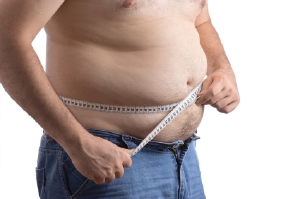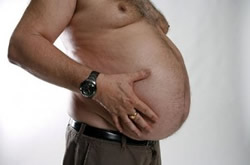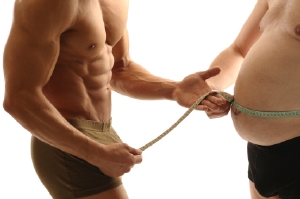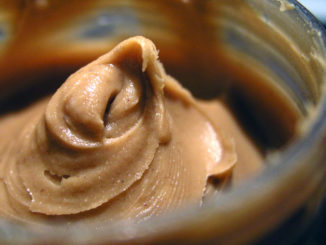
The causes, dangers and solutions for reducing visceral fat
If you’ve come to recognize the fact that you are indeed carrying excess weight and would classify yourself as either overweight or obese, it’s time to take action by getting on a well thought out diet and workout program.
The one thing that often goes overlooked however when an individual comes to terms with the fact that their body weight is too high is the difference between visceral fat and subcutaneous fat.
Most people just simply look in the mirror, see that they can ‘pinch an inch’ – or four as the case may be, and decide that enough is enough, they’re going on a diet.
But what they don’t realize is that it’s not necessarily the fat that they can pinch that’s the real problem. While there’s no question that any excess fat will put you at risk for a number of health conditions, the real danger lies in the fat that you can’t see – visceral fat.
Coming to understand what visceral fat is all about can help open your eyes so you can fully understand what’s all at stake with your current state of health.
Very often simply getting into a pair of smaller jeans or looking better in the mirror is not enough motivation for some people to begin making the lifestyle changes that they should, but when they sit up and realize the other major problems that their excess weight is causing, that could very well do the trick and help them see just how severe the situation is.
Let’s have a closer look at what visceral fat is all about so that you can get the complete picture of your current state of health.
What Exactly Is Visceral Fat?
When most people think of fat, they think of the squishy substance that lies just under their skin that often hangs over the top of their pants or causes their arms or thighs to jiggle.
Subcutaneous Fat and Visceral Fat
But, that type of fat is actually referred to as subcutaneous fat, since it does lie directly under the skin. The type of fat we’re talking about today is visceral fat, which is fat that isn’t so soft and squishy and which is found inside the body deep into the abdominal cavity.
Visceral fat is fat that has been deposited between the internal organs and is often referred to as appearing like a ‘pot belly’.
If you’ve ever seen someone who appears to have a lot of stomach fat accumulation, but yet when you press on their stomach you find that it’s very hard to touch, this is actually visceral fat at work.
Since it isn’t soft and squishy like subcutaneous fat, this indicates that it’s actually fat underneath the underlying muscles and within the actual organ structure.
This fat is pushing the stomach outwards so as to result in this pot belly appearance and causing the firm touch that you’ve experienced.
While some visceral fat can carry over slightly to the back of the body, the vast majority of it will be located right in the front of the body in that abdominal cavity region as this is where your organs are stored.
How We Develop Visceral Fat

So how do you develop visceral fat?
Is it any different than how you develop subcutaneous fat that lies directly under the skin? The answer to that is yes and no.
The most prevalent cause of visceral fat will be an energy imbalance where you’re consuming more calories through your diet than you’re expending daily through physical activity.
Because our population has become more sedentary by nature, this means we burn up fewer and fewer calories each day. We sit at home in front of TV’s, computers, and video games, and have as much as possible automated for us so that we don’t have to do any physical work.
In addition to this, the prevalence of fast and convenience food has also skyrocketed in our nation, which is what causes this correspondingly high calorie intake.
Pair both of these together and you have a great deal of energy coming in without a great deal of energy going out.
The body has to store this energy somewhere and your visceral fat stores are its fate.
One thing that should be noted about visceral fat in general is that it seems exercise plays a very large role in its development as well, possibly even larger than with subcutaneous fat development.
This is where the two types of fats do slightly differ.
In addition to the sedentary lifestyle element of things, high levels of cortisol will also cause a much higher accumulation of visceral fat due to the fact that the cortisol receptors are primary located within the abdominal region.
If you’re highly stressed out all the time or just experience high cortisol levels in general (especially if you have Cushing’s syndrome which causes an elevation in cortisol in the body), you’re going to be at a much higher risk for developing visceral fat around the abdominal region than someone who isn’t.
The Health Risks of Visceral Fat

So what are the precise health risks of visceral fat?
When you have a large amount of visceral fat on your body you will have many more health risks compared to someone who doesn’t have visceral fat, but instead just has body fat on their arms and legs for instance.
This abdominal fat region is very bad from a health point of view so when this is the situation at hand, it’s vital to really sit up and start taking action.
The very first health risk associated with visceral fat is the association it has with heart disease. Those who suffer from visceral fat often also have high corresponding blood cholesterol levels and may be setting themselves up for future heart problems down the road.
Fortunately weight loss can reverse this to a large extent, so the treatment is quite straightforward.
Another big health risk that those with high amounts of visceral fat have is that they will be at a very high risk for insulin resistance as well and insulin resistance can then actually set them up to suffer from diabetes if the situation is bad enough.
When you’re insulin resistant your body will not be responding to insulin in the manner it should, so the body will have to secret more and more insulin whenever carbohydrate rich foods are eaten.
Over time this is going to place a very large strain on the pancreas (where insulin comes from) and eventually it may burn out entirely.
Those who have insulin resistance also tend to be more susceptible to subcutaneous fat gain as well, so the problem only gets worse after getting started. It’s like an ongoing cycle that’s very hard to get out of once started.
Moving on, another big issue with having high amounts of visceral fat is that you could also put yourself at a higher risk of Alzheimer’s disease as it appears there tends to be a relation between these as well.
Then there are the psychological health risks of having a large amount of visceral fat. This will definitely impact your self-confidence and in some people could even bring on feelings of depression or low self-worth, causing them to withdraw from social situations and really take a negative view of life.
Tips For Losing Visceral Fat

As you can see, the health risks of visceral fat are quite extreme, so this is one problem that you really must be taking action on to help manage and treat.
What can be done to help reduce visceral fat?
The very first thing to focus on is your diet. You must make sure that you’re consuming a reduced calorie diet as this is what will get the body turning to body fat stores, including your visceral fat as a fuel source, decreasing its volume over time.
It should be noted that you will often see other areas of the body getting leaner before the abdominal region, as generally the first place you lose fat is the last place you gain it.
Abdominal fat tends to be quite a bit more stubborn for most people, so you’ll lose it later on after being on your weight loss program for some time so it’s important to be patient if you want to be successful in losing it.
Always Focus On Your Diet First

To structure your diet for losing visceral fat, aim to consume somewhere between 10 and 13 calories per pound of body weight depending on how active you are and adjust as time goes on based on the results that you see.
Make sure that you also really focus hard on reducing your carbohydrate consumption especially while only eating complex carbs of the ones you do consume.
Since visceral fat is so tied in to insulin resistance, you want to aim to decrease the necessary output of insulin as best as possible and a low carb diet will do this very nicely.
Instead, focus your diet on protein rich foods along with some healthy fats and plenty of vegetables, which will help promote faster fat loss and improve your condition.
Getting essentially fat acids in particular from foods such as flaxseeds, walnuts, and fatty fish will be imperative to success as these fats tend to boost insulin sensitivity the best.
Next Focus On Your Activity Levels

Then once you have your diet plan in place, it’s time to focus on exercise. If you are quite overweight you may not like the thought of going to the gym for an hour each day, so instead, simply focus on getting up and moving around more often.
Remember, every bit of activity you do during the day will count towards your total daily exercise goal, so don’t ever think that just because it’s only a 10 minute walk it won’t make a difference. It will.
If you can start today moving around more, it won’t be long before you can do those workouts in the gym.
Strength Training Is Very Important
Once you do get to the point of being able to exercise in the gym, for best visceral fat loss make sure that you’re adding strength training to the mix. This is the form of exercise that will elevate your basal metabolism the most, so you’ll get your body burning up body fat all day long, really helping you work towards the goal to shed all your visceral fat.
Strength train at least two to three times per week and then add some more of your cardio training to those workouts. Since regular physical activity does play quite a large role in visceral fat development, you want to be sure that you are getting this part of the program in place.
With subcutaneous fat you very well could lose it through just diet alone, but when visceral fat is the problem, diet and exercise combined will get you far superior results.
Reduce Your Stress Levels As Much As Possible
Finally, do everything possible to decrease your stress levels. You must work on bringing those cortisol levels down so if you’re leading a hectic lifestyle that causes you to be chronically stressed out, do whatever you can to change this.
Stress is often referred to as the ‘silent killer’ for a number of reasons. Often you may not even realize it’s impacting you before it’s too late, and as far as visceral fat is concerned, it’s definitely going to have an influence.
Everyone has their own unique ways of best managing their stress levels so figure out what works best for you (provided it’s a healthy method) and put that in place.
So there you have all the need to know info regarding visceral fat and what you must do to put this problem behind you. There’s no question that visceral fat is about much more than just not looking all that attractive in the mirror.
Unlike body fat that’s found on your arms or thighs this form of fat can really put your health in danger so unless action is taken to control it, you could be facing deadly consequences.




Be the first to comment